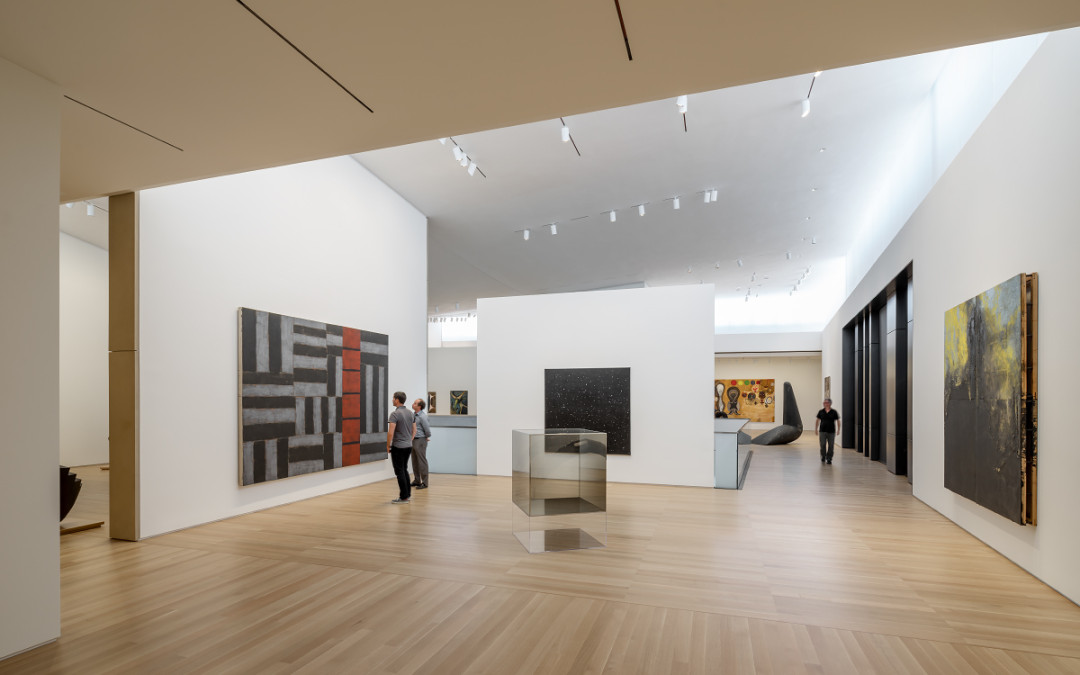Photo: The Anderson Collection, Stanford University
Copyright © Tim Griffith
The arts scene in the South Bay Area can often seem muted compared to the considerably more cosmopolitan atmosphere of San Francisco. After all, the City has the de Young, the Legion of Honor, the Asian Art Museum, the SFMOMA, and more. Heck, San Francisco even has the wonderfully quirky Cartoon Art Museum.
But to ignore the up-and-coming art scene emerging down the peninsula would be a mistake. While not as varied or as celebrated as its neighbor to the north, the South Bay packs a surprisingly energetic creative punch headlined by a group of smaller but oftentimes nimbler institutions that include the Triton Museum, the Rosicrucian Egyptian Museum, and the way-under-appreciated San Jose Museum of Art.
Stanford University too has long offered a first-class museum with its Cantor Arts Center, featuring an impressive series of rotating exhibitions, not to mention one of the largest presentations of Rodin bronzes outside Paris (several displayed in an adjacent outdoor park).
Less than a year ago, the school inaugurated the latest addition to its expanding campus arts district: the Anderson Collection at Stanford University, purpose-built to house an outstanding gift of 121 works of post-World War II American art donated by Harry W. and Mary Margaret Anderson. Assembled over the past five decades, the collection encompasses the work of 86 artists representing some of the most important art movements of the second half of the 20th century.
The couple started collecting art shortly after moving to the Bay Area in 1962. Influenced by a trip to Europe in the mid-1960s, the Andersons initially focused on early modernists such as Pablo Picasso and Henri Matisse. By the end of the decade, however, their attention had shifted to postwar American art, drawn to works that exuded creativity and imagination in addition to skill and craftsmanship. When considering a purchase—more often than not based on their own research—they would simply ask themselves, “Have we seen it before, and could we have thought of it?”
For years, the art lived alongside the family in their ranch house in Atherton. Architect Richard Olcott worked to capture that level of accessibility when designing the new building for the collection and, in large part, he succeeded. Upon entering the building, visitors are greeted with a gently-sloping staircase that gradually reveals the second-floor galleries as you ascend. Upstairs, spacious openings between gallery walls and diffused natural light from above further encourages a leisurely exploration of the collection.
Many of the more prominent post-war art movements are represented within the intimate second-floor galleries, with specific but exemplar pieces anchoring each. In the Geometric Abstraction gallery, for instance, we find works by Josef Albers, Ad Reinhardt, and Ellsworth Kelly, including Albers’ Homage to the Square: Diffused (1969). The Abstract Expressionism gallery is similarly highlighted by Jackson Pollock’s impressive action painting Lucifer (1947).
The Andersons were both aware and eclectic. Richard Diebenkorn, David Park, and Wayne Thiebaud feature in the Bay Area Figurative Art gallery. California Funk (an offbeat Northern California movement), Shaped Canvases (think Frank Stella, among others), and the Light and Space/Finish Fetish movements of Los Angeles round out some of the other styles and schools.
Most revealing of all is the ground-floor exhibit entitled Leo Holub and the Artist Portrait Project. In the mid-1980s, the Andersons commissioned Stanford professor Leo Holub to travel around the country to photograph more than 110 artists. Fifty five of these portraits, representing artists whose work appear in the second floor galleries, are on display, showcasing the special relationship that the Andersons clearly formed with the artists they supported.
“I get it—it’s like a small Whitney,” noted a first-time visitor from New York City, who had just come from viewing the newly-reopened Whitney Museum of American Art in Manhattan’s Meatpacking District just a month earlier. “The Whitney is clearly much larger, but the Andersons’ love of American art is obvious,” she said.
While You’re There
Speaking of the Cantor Arts Center, three major exhibitions currently on view are well worth a visit after you’ve experienced the Anderson Collection. On the main level, 500 Years of Italian Master Drawings from the Princeton University Art Museum offers nearly 100 rarely-seen drawings dating from the 15th through the 20th centuries, highlighting the role of drawing in history of Italian design.
The upper galleries feature Promised Land: Jacob Lawrence at the Cantor and Pop Art from the Anderson Collection at SFMOMA, the former featuring 56 exceptional works by American master Jacob Lawrence, among the best-known of 20th-century African-American painters.
Plan Your Visit
The Anderson Collection and Cantor Arts Center are open every day except for Thanksgiving and Christmas.
Wednesday to Monday, 11am – 5pm
Thursday, 11am – 8pm
Tuesday, closed
314 Lomita Drive
Stanford, CA 94305
anderson.stanford.edu
museum.stanford.edu
Admission to both museums is always free, and paid parking is available close to both buildings.

